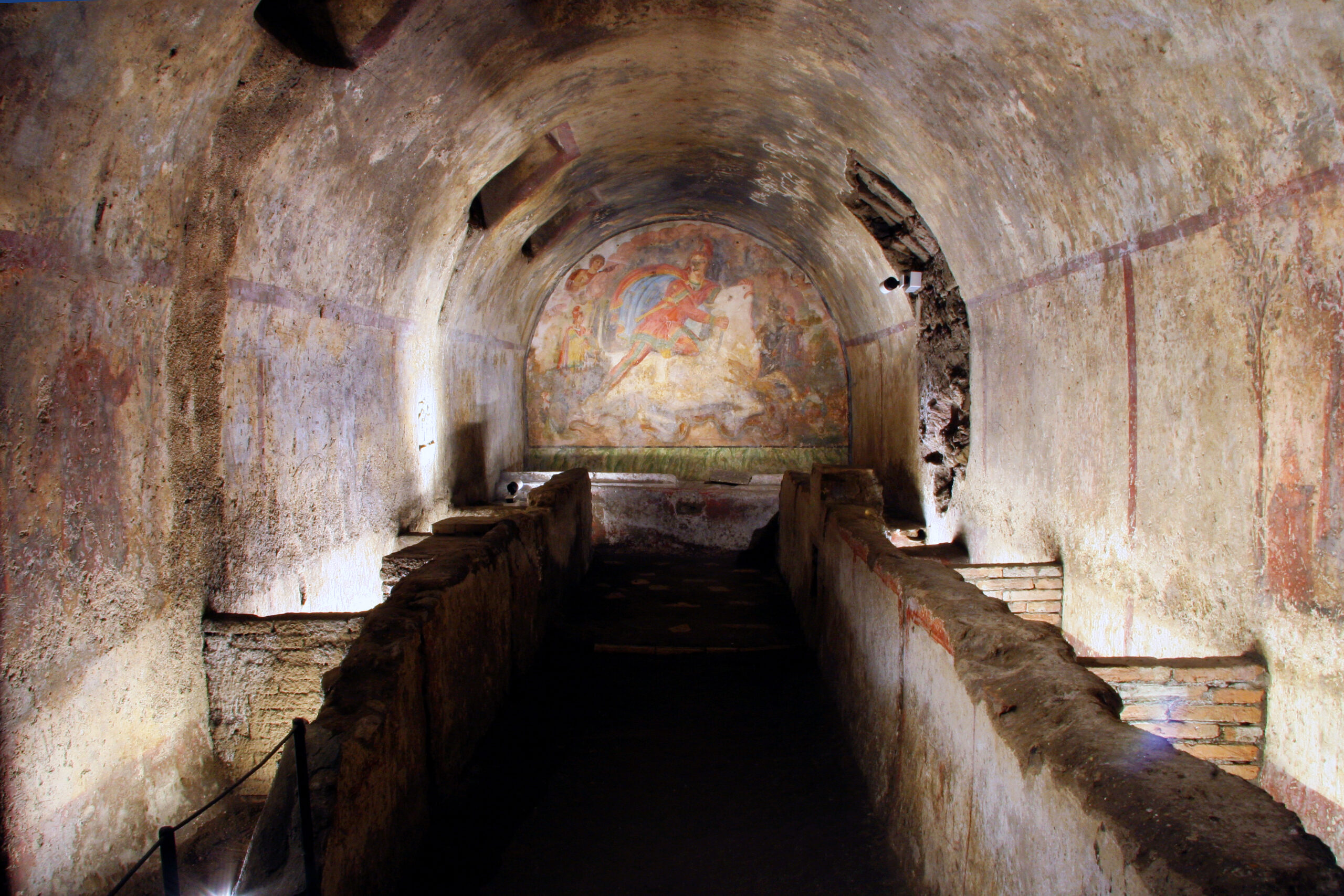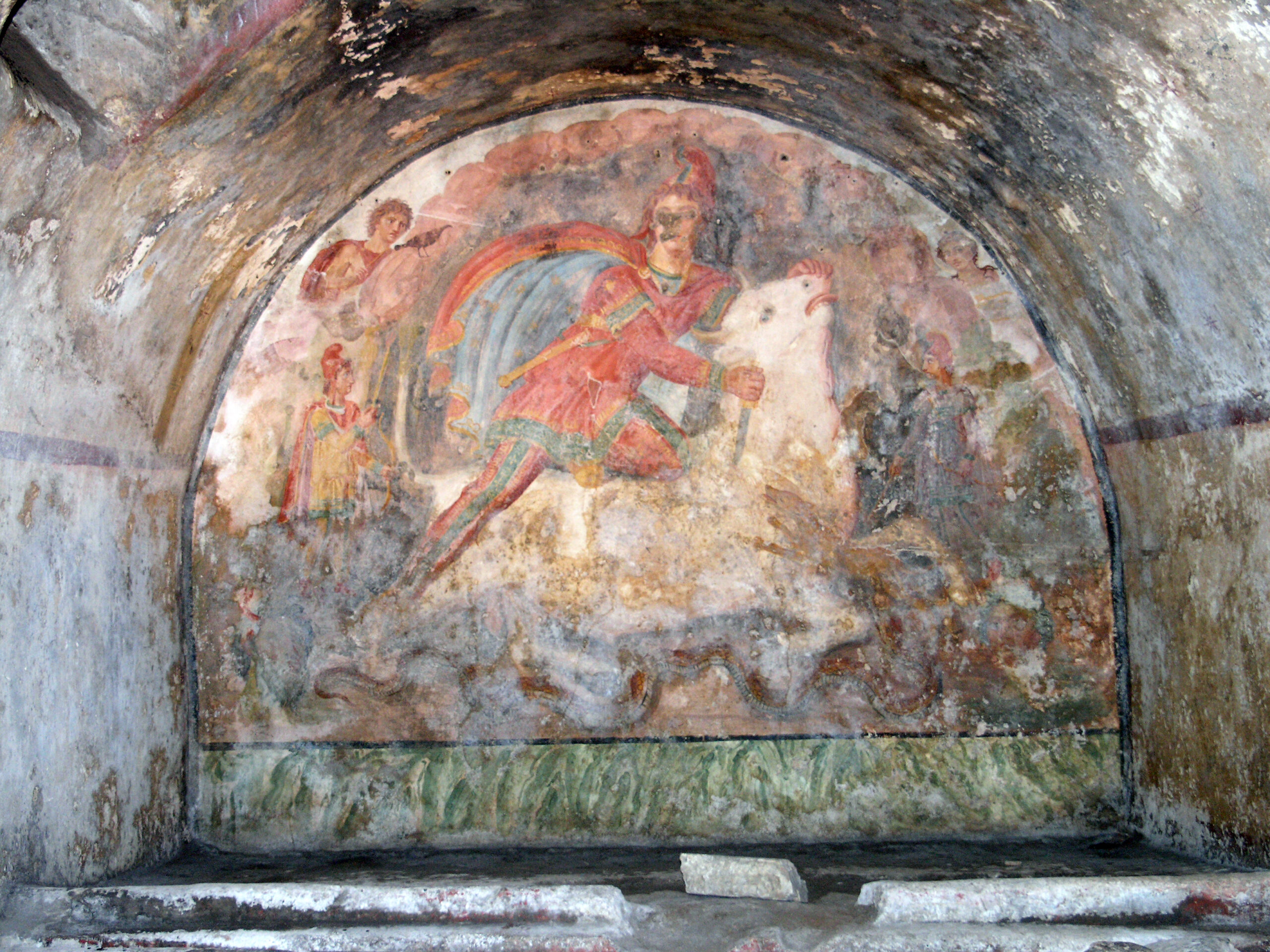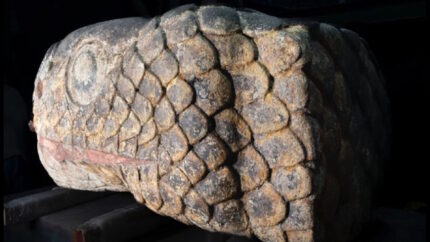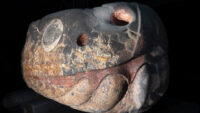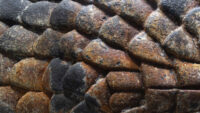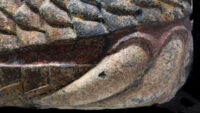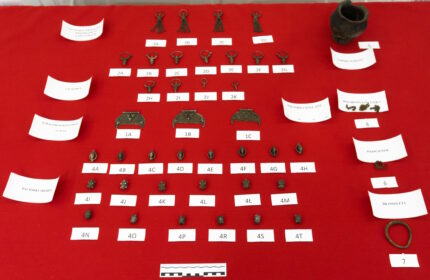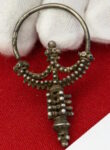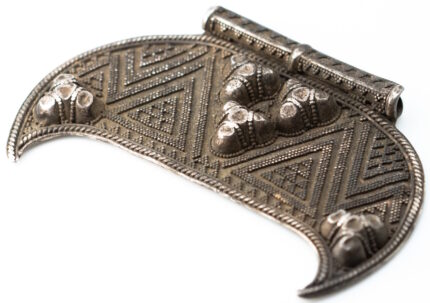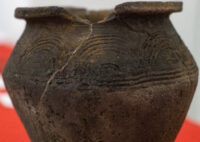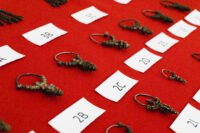A 2,000-year-old die discovered at the site of a Celtic settlement in Samborowice, Silesia, this August is the oldest die ever discovered in Poland. The rectangular cuboid was carved out of bone or antler and is of a type found in much larger Celtic settlements in Austria, Bohemia and Moravia. It is rare to find dice like this one in a small settlement like  Samborowice.
Samborowice.
Due to the low probability of rolling the dice so that it lands on the smaller two sides, which are the bases, the values 3, 5, 4 and 6 were usually marked on the longer sides. There were exceptions to this rule, such as the duplication of some values. In the case of the Samborowice dice, the [long] sides were marked only with the two highest values, i.e. 5 and 6. We are not sure whether it was a forgery or whether the item was used for a game unknown to us today.
 The Celts moved into the Lower Silesia area around 400 B.C. and inhabited the region until 120 B.C. The Celtic settlement in Samborowice is the only one in Poland to be regularly excavated, so it draws volunteers and students from around the world. Archaeologists from the Silesian Museum and the University of Wrocław have been leading excavations at the site for 11 seasons, this year braving heat-stroke inducing temperatures of 90F. Removing layers of soil and rock in full sun is heavy labor even when it’s not the middle of a heat wave. The team had to slow down the pace, but still managed to make some extraordinary finds.
The Celts moved into the Lower Silesia area around 400 B.C. and inhabited the region until 120 B.C. The Celtic settlement in Samborowice is the only one in Poland to be regularly excavated, so it draws volunteers and students from around the world. Archaeologists from the Silesian Museum and the University of Wrocław have been leading excavations at the site for 11 seasons, this year braving heat-stroke inducing temperatures of 90F. Removing layers of soil and rock in full sun is heavy labor even when it’s not the middle of a heat wave. The team had to slow down the pace, but still managed to make some extraordinary finds.
The die was found in the remains of a semi-dugout building, a structure dug into the ground used by the Celts as workplaces for various crafts including weaving, metalsmithing, pottery making and horn carving. The die was probably not a work product, but rather used for leisure activity during downtime.
 Another exciting find was an iron fibula, a brooch used to fasten garments. Fibulae from this era in Poland are typically heavily corroded and often survive only in fragmentary form. This example had the good fortune to get burned in antiquity. As it cooked, a layer of scale formed on the iron. It looks crusty and knobby, but that mineral crust preserved the brooch from corrosion. Conservators will remove the scale to reveal the intact iron underneath.
Another exciting find was an iron fibula, a brooch used to fasten garments. Fibulae from this era in Poland are typically heavily corroded and often survive only in fragmentary form. This example had the good fortune to get burned in antiquity. As it cooked, a layer of scale formed on the iron. It looks crusty and knobby, but that mineral crust preserved the brooch from corrosion. Conservators will remove the scale to reveal the intact iron underneath.



